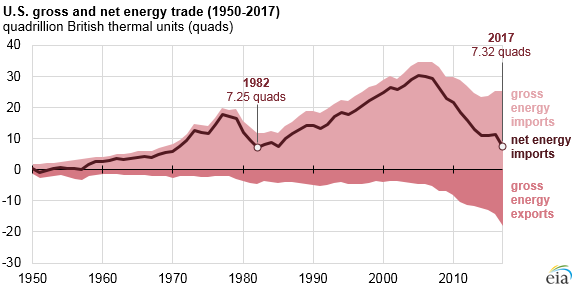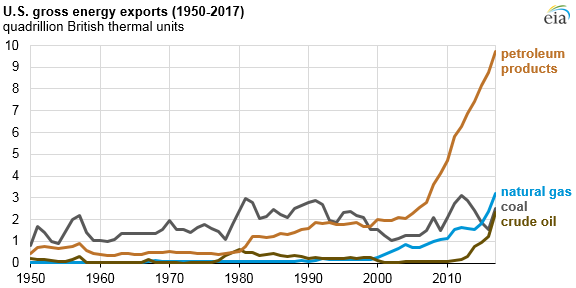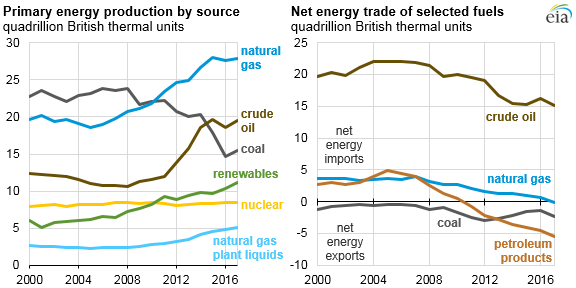
Increasing U.S. energy exports have been driven largely by increases in exports of petroleum products and natural gas. In recent years, exports of crude oil have also contributed to the overall rise in energy exports after crude oil export restrictions were lifted at the end of 2015. In energy content terms, the United States now exports nearly as much energy in the form of crude oil (2.3 quads) as coal (2.5 quads).
In 2017, the United States saw substantial increases in exports of all fossil fuels, with exports of crude oil (89% higher than in 2016), petroleum products (11% higher), natural gas (36% higher), and coal (61% higher) all increasing over the prior year. Exports of crude oil and petroleum products both reached record levels. Petroleum products such as gasoline, distillate fuel, propane, and other fuels currently make up the largest share (54%) of U.S. energy exports.

An increase in total U.S. energy production contributed to the decline in net imports in 2017, led by production increases in renewable energy (8%), especially hydropower and wind, as well as production increases in coal (6%), natural gas plant liquids (6%), crude oil (5%), and natural gas (1%). Total U.S. energy consumption was virtually unchanged from the previous year’s level.


Follow us on social media: